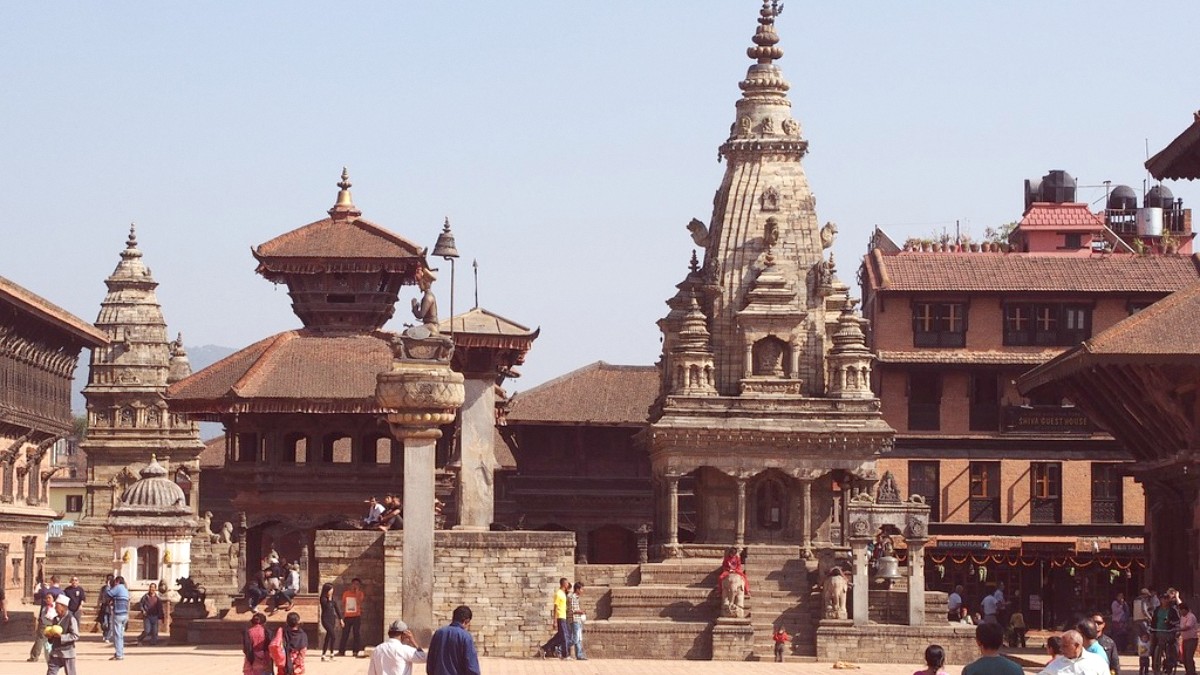
Around The Kathmandu Valley, Nepal
These define Bhaktapur's historical and cultural landscape.
Bhaktapur Durbar Square: This royal palace complex was the seat of the Malla kings for centuries. It presents a remarkable collection of temples, statues, and courtyards, all displaying intricate Newari craftsmanship. The square was the administrative and religious heart of the kingdom.
These are generally factual and based on common practices.
Bhaktapur's squares are peaceful and magical before main tourist groups arrive. An ideal time for quiet contemplation and photography.
After sunset, squares become quieter and are beautifully lit, offering a different, atmospheric experience.
Explore narrow alleys and hidden courtyards connecting main squares. These show local life, small shrines, and provide unique photographic opportunities away from the main tourist flow.
Bhaktapur's museums offer insights into the region's rich artistic traditions.
Within the 55 Window Palace complex, this gallery houses a significant collection of ancient Buddhist and Hindu artworks. Highlights include Thanka paintings, palm-leaf manuscripts, and impressive stone and metal sculptures.
This museum displays traditional metalwork, showing Newari craftsmen's artistry. You will find ceremonial vessels, household items, and intricate metal sculptures.
Situated within the ancient Pujari Math (monastery), this museum showcases traditional Newari woodcarving. Its centerpiece, the exquisite Peacock Window, a marvel of wood artistry. You can also see examples of various woodcarving techniques.
These three main museums, directly within Bhaktapur's core heritage zone, a comprehensive overview of the city's artistic legacy.
This five-storied pagoda, dedicated to Goddess Siddhi Lakshmi, an impressive example of multi-tiered pagoda architecture, renowned for its stability.
Dedicated to Bhairav, the fierce manifestation of Shiva, this temple a testament to the city's devotion to protective deities.
Believed to be built from a single tree, this temple dedicates to the trinity of Brahma, Vishnu, and Shiva, making it an unique religious site.
The entire city core of Bhaktapur is a living historical district. Character from its traditional Newari brick and timber architecture, narrow cobblestone streets, and open courtyards that serve as community spaces.
Bhaktapur's immediate urban setting has limited formal natural parks, but surrounding areas have scenic beauty.
Formal parks are limited within the old city. Numerous courtyards and open squares serve as public gathering spaces and green areas for residents.
Many guesthouses and cafes in Bhaktapur boast rooftop terraces that have views over the cityscape, allowing you to see the intricate urban fabric.
Wildlife viewing is not applicable for Bhaktapur city itself.
Bhaktapur's geology features the Kathmandu Valley's ancient lakebed, a result of fertile soil. No prominent geological features within the city.
Capture potters at work, showing their traditional methods.
Photograph traditional Newari daily life scenes in narrow alleys, like women spinning wool or men gathering for tea.
Focus on close-up shots of intricate wood carvings on windows, doors, and temple struts.
After a rain shower, look for reflections of temples and buildings in puddles, creating unique perspectives.
Consider hiring a local guide to reveal more of Bhaktapur's hidden history and stories.
Bhaktapur is a living heritage site. Observe local life respectfully.
Many structures in Bhaktapur are actively being restored after the 2015 earthquake.
Observe the traditional building techniques and the ongoing efforts to maintain this historical treasure.
Discover small, revered shrines tucked away in residential courtyards.
Seek out the numerous elaborately carved stone spouts (dhungedhara) that still serve as water sources for locals.
Wander into the residential courtyards that branch off the main alleys to observe daily life.
Located near Durbar Square, Bhaktapur has its own Kumari, a living goddess, though less prominent than the one in Kathmandu. You can observe the residence from outside, respecting the privacy of the Kumari.
Many community patis (rest houses) and residential courtyards are frequented by locals for daily rituals and social gatherings but garner less attention from tourists. These offer authentic interactions.
Many smaller local temples, community patis (rest houses), and residential courtyards are frequented by locals for daily rituals and social gatherings but garner less attention from tourists.
Wander into the residential courtyards that branch off the main alleys. Here, observe daily life, discover small, revered shrines, and admire traditional Newari architecture away from the crowds.